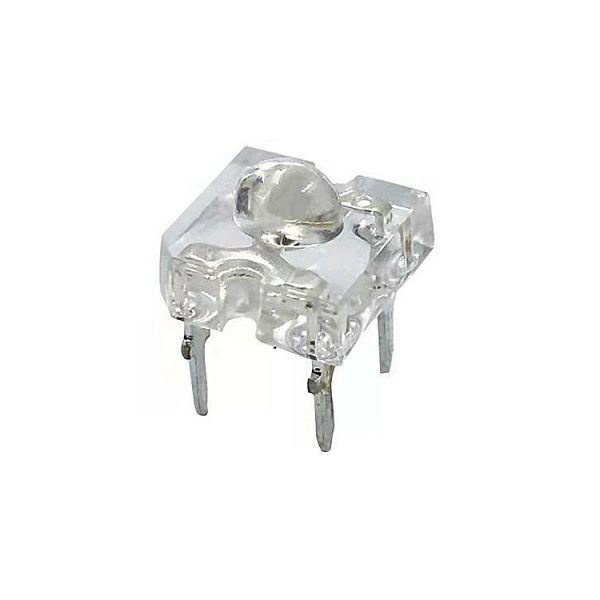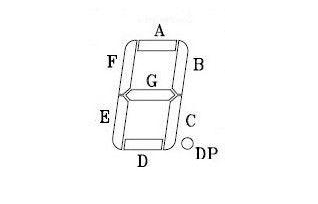Types of LED Light Emitting Diodes
- LED light-emitting diode light-emitting color:
According to the luminous color of the luminous tube:
It can be divided into red, orange, green (subdivided into yellow-green, standard green and pure green), blue light and so on. In addition, some LED light-emitting diodes contain chips of two or three colors.
According to whether the light-emitting diode is mixed or not mixed with scattering agent, colored or colorless,
The above-mentioned light-emitting diodes of various colors can also be divided into four types: colored and transparent, colorless and transparent, colored scattering and colorless scattering. Scattering light-emitting diodes can be used as indicator lights.
- LED light-emitting diode light-emitting surface points:
According to the characteristics of the light-emitting surface of the luminous tube, it is divided into a round lamp with a through hole, a square lamp with a through hole, a rectangular through-hole, a front luminous tube, a side tube, and a micro tube for surface mounting.
The through hole circle is divided into φ2mm, φ4.4mm, φ5mm, φ8mm, φ10mm and φ20mm according to the diameter. In foreign countries, the φ3mm light-emitting diode is usually recorded as T-1; the φ5mm is recorded as T-1 (3/4); the φ4.4mm is recorded as T-1 (1/4).
The angular distribution of circular luminous intensity can be estimated from the half-value angle. From the angular distribution of luminous intensity, there are three categories:
1) High directivity: Generally, it is a pointed epoxy package, or a package with a metal reflective cavity, and no scattering agent is added. The half-value angle is 5°~20° or less, with high directivity, it can be used as a local lighting source, or combined with a photodetector to form an automatic detection system;
2) Standard type: usually used as an indicator light, its half-value angle is 20°~45°;
3) Scattering type: This is an indicator light with a larger viewing angle, the half-value angle is 45°~90° or greater, and the amount of scattering agent is relatively large.
- According to the structure of light-emitting diodes
According to the structure of light-emitting diodes, there are full epoxy encapsulation, metal base epoxy encapsulation, ceramic base epoxy encapsulation and glass encapsulation.
- According to luminous intensity and working current
According to the luminous intensity and working current, there are LEDs with ordinary brightness (luminous intensity 100mcd);
The luminous intensity between 10~100mcd is called high-brightness LED light-emitting diode. Generally, the working current of LED is more than ten mA to tens of mA, while the working current of low-current LED is below 2mA (the brightness is the same as that of ordinary light-emitting tubes).
In addition to the above classification methods, there are also methods of classification by chip material and classification by function.
Its main categories are:
1) LED (Light emitting diode): We have LED products called LEDs, some called P2 products, and some called DIP LEDs. In any case, as long as they are in-line, they belong to one type. There are many types of LED types:
According to the shape of the colloid: 3mm, 4mm, 5mm, 8mm, 10mm, 12mm, square, oval, tombstone, and some special shapes, etc.;

According to the color of the colloid: colorless and transparent, colored and transparent, colored scattering, colorless scattering, etc.;
By color: red (red), orange (orange), yellow (yellow), yellow-green (green yellow), green (green), blue-green (blue green), blue (blue), purple (pink), ultraviolet (uv), white (white), infrared, etc.;
2) SMD (Suface mount device): Surface mount diodes or surface mount components are his names, and there are many categories in this:
Divided by shape and size: 0603, 0805, 1210, 5060, 1010, etc. Generally, SMD is diamond-shaped, so its name is based on the size of length * width. The industry is good at using inches, not millimeters. It is also called in millimeters, not as good as 1608 (1.6*0.8mm).
The luminous color and the type of colloid are the same as LED products, but the shape of the product has changed a lot.

3) Piranha (Flux led): This product is developed because the luminous efficiency of LED cannot meet the requirements of automobiles. It is a low-power product. The driving current is generally 50MA, and the maximum current is 20MA for ordinary LEDs. It can reach 70mA, because of its better heat dissipation, it is generally used in the rear lights of cars.
4) High power (power led): LED products for existing lighting, it has the following classifications:
①According to the power: 1w, 3w, 5w, etc.;
② According to the top light-emitting lens: flat head, spotlight, wine glass shape, etc.;
③According to the process, there are also aluminum substrates and anti-luminous ones.
5) LED digital tube (LED Display): It was first used as a display screen and digital display

According to the shape: 1, 2, 3, 4, etc.;
Surface color: gray surface black glue, black surface white glue, etc.;
Polarity: Common Yin, Common Yang;
The color can also be made into many kinds like LED.
6) Dot Matrix (LED Dot Matrix): This product is similar to a digital tube, and is used for information display. Changes in the spacing and diameter of the holes are different products. Now it is generally divided into 5*7 and 8*8, and its colors include single-color, double-color, three-color and so on.
① According to the color: single red, single green, double primary color, three primary colors, etc.;
② According to the diameter of the hole: Φ2.0, Φ3.0, Φ3.75, Φ5.0, etc.;
③According to points: 5*7, 8*8, 16*16, etc.;
④There are some other products: such as pixel tube (cluster), measuring light source (LED Side Light Source), infrared receiving and emitting products (Infrared & PhotoDiode) and so on.













Explore More from Queendom Lamp
Stay updated with the latest LED technology, lighting solutions, and industry insights.
Request a Quote About Queendom